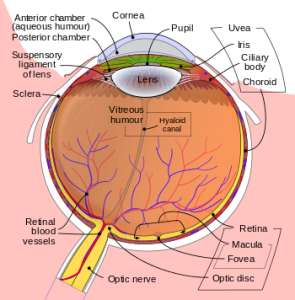How does the sweet spot fovea help us read?« Back to Questions List
|
The word fovea, with origins in Latin, means pit or pitfall. The fovea centralis, a small central pit in the eye, composed of closely packed cones is responsible for sharp central vision. Among mammals, the sweet spot fovea is seen only in humans and other primates. Fovea plays a crucial role in humans by enabling reading and recognizing colours, images and faces. The importance of this sweet spot fovea is that it is the only part of the retina that allows 100% visual sharpness. It is observed that clarity of vision is the best when the object is in the line of sight, an imaginary line connecting fovea and a fixation point. The credit of identifying the line of sight goes to Leonardo da Vinci. The fovea is an important region that decides our visual perception. Fovea passes on major portion of the input from the eyes to visual cortex of the brain. Hence central vision has better quality than peripheral vision. The fovea performs tasks like reading in a much better manner compared to other parts of retina. However, the fovea is a poor performer in processing rapidly changing visual signals.
A team led by Raunak Sinha and Mrinalini Hoon recently made comparisons of the physiological properties of fovea and peripheral retina. Their work has been published in the journal CELL. Their studies have proved how the central vision dominated by fovea differs from that of peripheral vision. It also gives insights on how the fovea works at cellular and circuit level. What is colour blindness and why is it prevalent more among men?How do telescopes help us see distant objects? |

